Throughout the Northern Hemisphere, April brings colorful and fragrant flowers, and the fruit trees produce delicate blossoms that linger only for a short while as they scent the air then flutter to earth in the spring breeze. Japan, especially the city of Kyoto, is famous for cherry blossoms, but so are many other cities throughout the world, including Paris, Dublin, Amsterdam and Vancouver. Here in the United States, New York City and Washington D.C. have lovely displays of cherry blossoms.
Orange trees produce not just delicate white blossoms, but also a complex, heady fragrance that is both sweetly floral and refreshingly herbal. The place to enjoy orange blossoms is Spain, where many believe the best oranges in the world are grown. The cities of Seville and Valencia are destinations for viewing aromatic orange blossoms. Spain is a wonderful country to visit in spring, and orange blossoms are only one of the many reasons. For our purposes, one of the best reasons to visit Spain is the food. Wayne and I have visited Spain on three separate occasions, and every time we ate fabulous food, enjoyed Spain’s rich culture, appreciated the elegant grace and dignity of the Spanish people and left feeling that there was so much more to learn and eat.
It was in Madrid that we discovered Spanish Almond Cake, Pastel de Almendras, which is featured in my February, 2022 blog. This simple, light and deeply flavorful cake has become Wayne’s favorite, and I bake it now every year for his birthday. Spanish Almond Cake would also be an excellent choice for your family for Easter. It contains ground toasted almonds, almond extract and lightly whipped egg whites in the batter. Almonds are a key ingredient in many Spanish dishes, both sweet and savory, as almond orchards are plentiful in Spain, and almond blossoms add beauty to the Spanish countryside in spring. If you have an opportunity to visit Madrid, as we did, be sure to tour the Prado Museum, a world class art collection, featuring Spanish artists such as Velazquez, Goya, El Greco, Murillo, Picasso and many other distinguished European artists, including Hieronymus Bosch, Rembrandt and Raphael. The dark, moody and soulful style of the Spanish painters will give you a glimpse into the ancient and complex culture of Spain.
Human beings have been living on the Iberian Peninsula, where Spain is located, for 1.2 million years, and fossil remains found in Spain indicate that the earliest known European hominids lived in Spain. Numerous cultures have added to Spain’s diverse history, art and culture over the centuries. Iberian and Celtic tribes occupied the territory, and pre-Roman Phoenician and Greek trading posts were established along the coasts prior to the Roman Empire’s conquest of Spain which began in 210 BC and continued for 600 years. The Roman occupation profoundly influenced Spanish culture, beginning with the language and Roman alphabet. Spanish is a romance language, derived from Latin. The Romans in Spain also established a legal system, roads, aqueducts, coliseums and other structures in the Romanesque architectural style. One of Spain’s most significant archeological sites is the Roman Coliseum in Merida. Completed in 8 BC with seating for 15,000 spectators, this massive complex is now a UNESCO World Heritage Site.
After the Romans introduced Christianity to Spain in the First Century of the Current Era, dozens of churches and cathedrals were also built in the Romanesque style.
My favorite of all the many Spanish cathedrals is Santiago de Compostela in Galicia, also a World Heritage Site. Completed in 1211 in both the Romanesque and Gothic styles, this beautiful cathedral, dedicated to St. James the Apostle, and considered to be his burial place, was one of the major places of pilgrimage throughout the Middle Ages. Chaucer mentions this famous church in The Canterbury Tales, written in the late 1300s.One of the characters in Chaucer’s lively narrative about a group of pilgrims, the Wife of Bath,
| …had been to Rome and also to Boulogne, St. James of Compostella and Cologne Modern English Translation by Nevill Coghill |
When we visited Santiago de Compostela Cathedral, we were amazed by the worlds’ largest thurible, (incense burner,) which hangs from the ceiling by a rope. During services, it is filled with incense, lighted and the rope is then pulled by four adult acolytes, lifting the thurible up and swinging it on a wide arc from side to side, filling the enormous interior of the church with smoke and the sweet scent of incense. Called the Botafumeiro, which means “smoke expeller” in Galician, this magnificent piece of metal work, crafted in the Baroque style of silverplated brass and bronze, was installed in 1604 and is still used on special occasions such as Good Friday.
In contrast to Spain’s many Romanesque, Gothic and Baroque churches, the much newer Basilica de la Sagrada Familia (Holy Family,) in Barcelona was consecrated only in 2010, well over a hundred years after construction began in 1882. Still incomplete, this unique example of Catalan Modernism, Art Nouveau and Late Spanish Gothic architecture is well worth a visit. Antoni Gaudi was the original architect, and his vision is like no other. The soaring spires of this church include bright colors and organic, plant-like shapes and symbolic elements seen nowhere else on Earth. Barcelona is the city of Gaudi, and several other buildings in Gaudi’s iconic style can be viewed in this exciting city. Several factors have slowed the completion of Sagrada Familia, including the death of Gaudi in 1926, currently the only person buried in the crypt of the Basilica, the Spanish Civil War of 1936, and the recent Covid Outbreak. We have visited Sagrada Familia twice over the years, and it was heartwarming to see that progress is still taking place.
Though the Roman occupation of Spain can still be seen in everyday Spanish life, another historic event, lasting nearly eight hundred years, has also shaped Spanish culture and especially the cuisine—the Muslim Arab Conquest. Beginning in 711, the Umayyad Caliphate invaded Spain from Africa through the Strait of Gibraltar, and conquered the land within seven years, establishing their capital in Cordoba. Muslim rule continued until 1492, when Queen Isabella and King Ferdinand, the patrons of Christopher Columbus, reunited Christian Spain. Muslim culture influenced Spain profoundly in the areas of learning, art music, philosophy, architecture, and as I have mentioned, food. The Muslims introduced alchemy, the precursor of chemistry, algebra, Arabic numerals, the game of chess, Aristotelian philosophy, and the concept of zero. Spanish guitar and Flamenco music and dance also have Islamic origins. The most impressive example of Islamic Architecture in Spain and perhaps in the entire world, is The Alhambra, begun in 1238 as a huge Palace Fortress complex located in Granada, and now a World Heritage Site. Over the years, Spanish Renaissance architectural elements were added to The Alhambra, and in 1870 it was declared a Spanish National Monument and underwent a major restoration.
From the culinary perspective, the Muslim Arab Conquest’s greatest gift to Spain was the introduction of large numbers of herbs, spices, fruits and vegetables that were previously unknown on the Iberian Peninsula. These foods have become part of Spanish life and have found their way, partly through subsequent Spanish colonization, throughout the world.
The Muslims brough sugar to Spain along with fabulous desserts such as nougat and marzipan, hugely popular in Spain today. Almonds and dates, along with rice, chickpeas and eggplants, transformed Spanish food through Muslim influence. And the spices all of us use today, cinnamon, nutmeg, anise, ginger and sesame, all came to Spain along with the Muslim Arab Conquest.
Spanish food is also influenced by geography. Bordered on the north by France, on the west by Portugal and the Atlantic Ocean, on the east by the Mediterranean Sea, and on the south by Morocco, just across the Straits of Gibraltar, Spanish cuisine understandably includes large amounts of fish and seafood as well as African spices and flavorings. Spain’s most famous savory dish is Paella, originally from Valencia and now popular throughout the country. This one-dish meal is cooked in a large skillet and contains rice, seafood such as shrimp, mussels and calamari, chicken and aromatic saffron, paprika and bay leaf. Spanish olive oil and tomatoes, garlic, onions and bell peppers, vegetables familiar to other Mediterranean cuisines, round out this hearty meal. A favorite summer dish from the warm southern region of Andalusia is Gazpacho, a cold soup made of raw summer vegetables (the same Mediterranean vegetables used to make Paella,) blended and mixed with olive oil and vinegar.
Some of Spain’s unique social customs are also influenced by geography and weather. The siesta, a fabulous invention, gets everybody out of the heat in the middle of the day. The Spanish siesta usually goes from two to five in the afternoon. Schools and businesses often close during this time, allowing Spanish families the opportunity to have lunch together at home, and perhaps a nap before returning to school or work. The siesta is also a time for personal quiet and stress reduction. It is considered rude to make phone calls or social visits during the siesta, and medical research has confirmed a 37% reduction in coronary mortality due to the siesta.
While lunch is the most important meal of the day, it is customary in Spain to have several small meals a day instead of three large ones. That’s where tapas, small snacks such as olives, or little servings of meat or cheese come in while waiting for dinner, which will take place from 9-11 PM. The late Spanish dinner hour is hard for visitors to adjust to, but the long Spanish evenings are cool, starry and pleasant and allow time for chatting and visiting while dining on the patio or at an outdoor restaurant away from the oppressive heat of the day.
Spain’s favorite dessert is Flan, which was developed originally in ancient Rome as a savory custard to be eaten with meat. It was a small step to add honey to this milk and egg custard and turn it into a dessert. Today’s Flan is made like an upside-down cake with caramel on the bottom and the uncooked custard poured over the top. Then the Flan is baked and inverted after it has cooled to reveal the golden-brown caramel dripping over the custard. Flan is now adored throughout Spain’s former colonies, including Mexico, California, South America, the Philippines and several islands in the Caribbean. Churros, fried pastry dipped in sugar and cinnamon, are popular afternoon snacks in Spain and are just as popular in Mexico. Two other desserts with Spanish names, Dulce de Leche (milk caramel) and Pastel de Tres Leches (three milks cake,) are ubiquitous in Mexico and Latin America and assumed incorrectly to have originated in Spain. Dulce de Leche, which is a caramel made from cooking sweetened milk over a long period of time, apparently originated either in Mexico or South America, although it is also made today in both Spain and France. A favorite dessert of mine, Tres Leches Cake, is a sponge cake soaked while it is still hot out of the oven in three types of milk, whole milk, sweetened condensed milk and evaporated milk. It seems that this divine dessert was also created in Mexico. You can find the recipes for both Dulce de Leche and Tres Leches Cake in the October Calendar section of our website in the Tea to Honor Our Ancestors, (Dia de los Muertos) menu.
Now that we have enjoyed April in Spain, I want to help you get ready for Passover, which begins on sundown on April 5 and Easter which arrives on April 9 this year. Our website offers you a menu with recipes for an Easter Afternoon Tea in our April calendar section of The Tea Book, and our Kosher Afternoon Tea menu can be found in The World of Tea Parties section. Our Kosher Afternoon Tea includes a lovely Pareve Chocolate Passover Cake with Divine Chocolate Sauce as well as a beautiful Apple Cake, both appropriate for the Passover meal. Two other cake recipes from my blogs that would be perfect for Easter include Orange Poppyseed Cake, in my April 2017 blog and Ellen’s Fabulous Coconut Cake in my April 2022 blog. Now let’s learn about the most popular Easter cake in Spain.
(Spanish Easter Cake)
Easter is a very old holiday, and Easter breads and cakes have changed over the years. Prior to the invention of baking powder in 1856, most Easter Breads contained yeast, and the miraculous rising of the dough was a symbolic reminder of resurrection and the rebirth of plants and flowers throughout the earth in spring. Traditional Easter breads like Tsoureki in Greece, Pane di Pascua in Italy and Mona de Pascua in Spain contained not just yeast and flour but also butter and eggs, both of which the faithful were forbidden to eat during the Lenten fast. Most of these traditional Easter breads were round in shape with the centers filled with boiled Easter eggs. Tsoureki, for example, was braided and formed into a circle with the three strands of the braid symbolizing the Trinity and bright red Easter eggs resting in the center. With the introduction of baking powder and the subsequent development of chocolate Easter bunnies in Germany in 1890, bakers were liberated from yeast and free to bake Easter cakes instead.
In Spain today, Mona de Pascua, which is very popular in Catalonia and Valencia, can be made as either a giant doughnut filled with boiled and decorated Easter eggs or as an Easter cake covered with chocolate glaze and decorated with an exuberant combination of Easter eggs, chocolate bunnies and eggs, almonds and even feathers, flower petals and cartoon characters! In Barcelona and throughout Catalonia today, Mona de Pascua is so popular that bake shops sell up to 600,000 of these festive cakes every year during the Easter Season. I am sharing with you the cake version of this ancient Easter treat.
For the Cake:
- 4 large eggs at room temperature
- 1 ½ cups sugar, divided
- ½ cup (1 stick) unsalted butter at room temperature
- 1 cup all-purpose flour
- 1/2 cup almond flour
- 1 teaspoon baking powder
- ½ teaspoon kosher salt
- ½ teaspoon almond extract
- Grated zest of 1 orange
- 2 egg whites
- Baking spray with flour for the pan
- Parchment paper for the pan
- ½ cup apricot jam or orange marmalade (I used Dalmatia Fig Orange Spread).
- 6 ounces bittersweet or semisweet chocolate, such as Ghirardelli, broken into pieces
- 8 ounces (1 stick) unsalted butter at room temperature, cut into small chunks
For the Decoration:
- Boiled and decorated Easter eggs
- Toasted almonds and or pastel sugared almonds
- Chocolate eggs
Special Equipment: large mixing bowl, medium mixing bowl, flour sifter or sieve, electric mixer, rubber spatula, 10” round springform pan, parchment paper, 1-quart glass measuring cup, wire cooling rack, offset spatula or bamboo pizza paddle, bamboo skewer, long serrated knife, decorative cake platter or cake pedestal.
Preheat oven to 350 degrees F.
- Spray a 10-inch springform pan with cooking spray with flour. Cut a round of parchment to fit the bottom and place it in the pan. Re-spray withing baking spray, including the sides of the pan. Cut pieces of parchment to fit the inner sides of the pan, press them until they adhere and spray again. Set aside.
- Beat ½ cup butter and one cup of sugar in a large mixing bowl with a hand-held electric mixer until light and pale, about 4 minutes. Add 4 eggs and beat just until the eggs are fully incorporated into the mixture. In a medium sized bowl, sift together the all-purpose flour, almond flour, salt and baking powder. Gradually beat the flour mixture into the sugar, butter and egg mixture just until no flour is visible. With a spatula, fold in the almond extract.
- With clean beaters, beat the egg whites until soft peaks form. Gradually add the additional half cup of sugar while beating and continue beating until stiff peaks form.
- Using the spatula, fold the egg whites along with the orange zest, into the batter until no white from the egg whites is visible. Do not beat. Pour the batter into the prepared pan and spread to even out the batter with a spatula. Bake in a 350-degree F. pre-heated oven for 40-45 minutes or until a bamboo skewer inserted in the center comes out clean.
- Place the pan on a wire rack to cool completely. When the cake has cooled, carefully remove it from the pan, remove the parchment and place the cake on a decorative cake platter or cake pedestal. Using a serrated knife, carefully cut the cake into two layers horizontally. Using a bamboo pizza paddle, if you have one, remove the top layer, spread apricot jam evenly over the bottom piece, and replace the top cake carefully to make sure it fits evenly.
- Place the prepared chocolate and butter for the glaze in a microwave-safe glass measuring cup and microwave at 30-second intervals, stirring in between until the mixture is smooth with no lumps. This process will take about 1 ½ minutes. Slowly pour the chocolate glaze over the cake, allowing it to drip decoratively over the sides of the cake. Decorate as desired with Easter eggs, toasted or candied almonds, chocolate almonds, and chocolate bunnies, placing the decorations directly into the glaze so the decorations will adhere as the glaze sets. Refrigerate any leftovers.





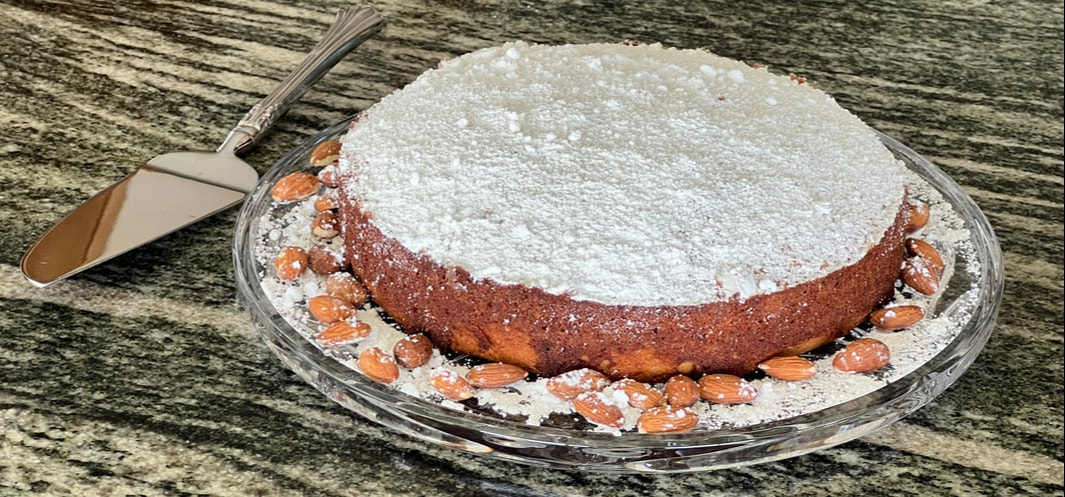

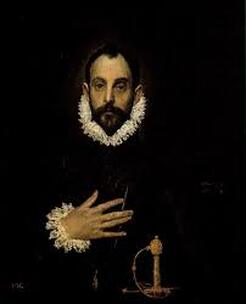




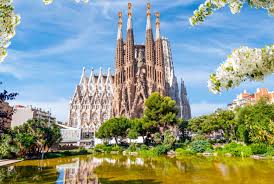
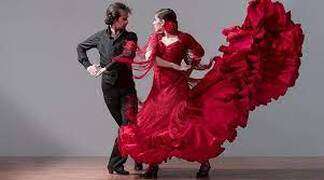





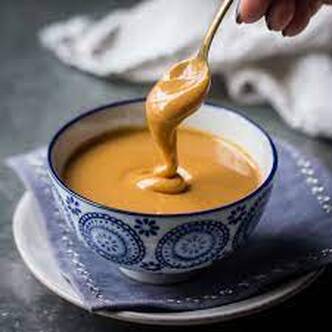




 RSS Feed
RSS Feed